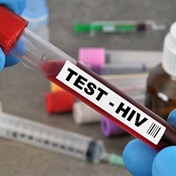An early stage trial of Sangamo BioSciences Inc's HIV treatment found that gene therapy reduced levels of the virus and even eliminated it in one patient with a naturally occurring gene mutation.
The very small phase 1 trial tested the SB-728-T gene therapy, which is designed to disrupt the CCR5 gene used by HIV to infect cells of the immune system.
If shown to be safe and effective, the treatment could end the need for the antiretroviral drugs now used to keep the virus in check.
Trial results presented in Chicago at the Interscience Conference on Antimicrobial Agents and Chemotherapy show a "statistically significant relationship between estimated modification of both copies of the CCR5 gene and viral load," said Dr Carl June, trial investigator and director of translational research at the University of Pennsylvania's cancer research institute.
In a statement, Dr June said the results suggest the need to increase the frequency of the modified cells in HIV-infected patients, which could lead to a "functional cure" for Aids, but the means of achieving this have not been clarified.
Trial of the therapy in humans
Sangamo said earlier this year that a single infusion of the treatment improved immune system damage in nearly all of the subjects analysed in the first trial of the therapy in humans. The 10 patients in the trial were on antiretroviral therapy when the study began. After four weeks, six of them stopped taking antiviral medication for 12 weeks.
Viral load decreased in three of the six subjects, with one patient's viral load reduced to undetectable levels. That patient carried a naturally occurring mutation in one copy of his CCR5 gene.
"Since one copy of his gene was already disrupted naturally, twice as many of his cells were 'biallelically' modified," Sangamo Chief Executive Officer Edward Lanphier said in a telephone interview, meaning that both members of the CCR5 gene pair were knocked out.
He estimated that between 5% and 10% of HIV patients carry the genetic mutation.
Lanphier said Sangamo will move ahead with a strategy to maximise the number of cells that can be "biallelically" modified by SB-728-T. Options include targeting only the small segment of patients with mutated CCR5 genes or using "strategies that boost the amount of engraftment of modified cells".
(Reuters Health, Deena Beasley, September 2011)
Read more:




 Publications
Publications
 Partners
Partners










